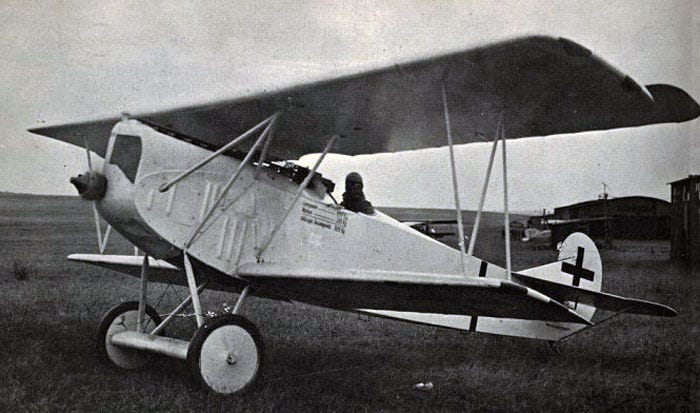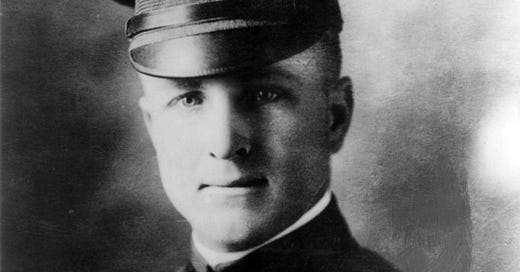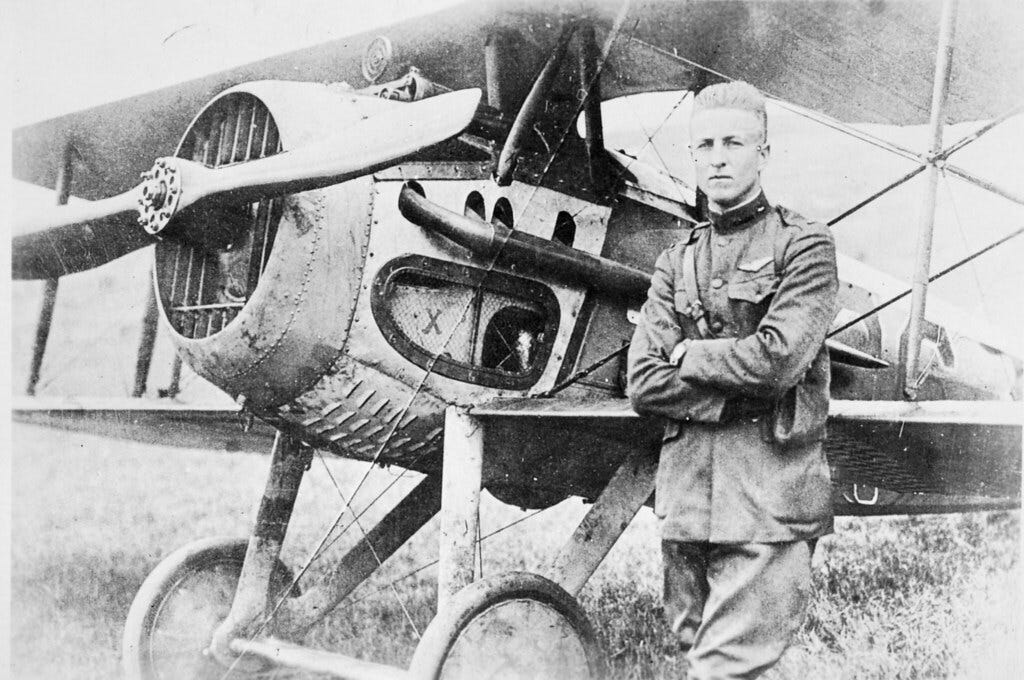Author’s Note: To mark Veterans Day 2024, I’m republishing this article about a forgotten American hero of the Great War. There have few more redoubtable American warriors than Frank Luke, the Arizona Balloon Buster.
CHINESE SPY BALLOON HOVERS OVER US: That’s got to be the best Drudge Report headline ever. And because this is the Age of Biden, we’ve also been treated to the ludicrous spectacle of senior government officials and military officers wringing their hands over what, oh what, to do?!
All I could think was: Frank Luke, you should be living at this hour.
First Lieutenant Frank Luke, Jr., United States Army Air Service, Medal of Honor, is one of America’s forgotten heroes of World War One. Before being killed in action on 29 September 1918, he scored eighteen aerial victories, making him the Air Service’s second highest-scoring ace, after Captain Eddie Rickenbacker (26 aerial victories).
I thought of Luke because he was nicknamed “the Balloon Buster.” Of his eighteen kills, fourteen were German observation balloons. These, the remote ancestors of the Chinese espionage balloon that has Biden & Co. flummoxed, were high-priority targets for US, British and French airmen of the Great War. They were captive balloons, tethered to the ground by cables and their purpose was to give artillery observers a birds-eye view of the battlefield. High in the sky, these observers could direct artillery fire via telephone on targets not visible at ground level.

The German observation balloons were heavily defended by antiaircraft guns and air patrols. When mortally hit they died spectacularly, going down in flames as their hydrogen gas ignited. When this happened, the observers would usually make good their escape by parachute. They were highly trained, hence valuable, personnel and were provided with parachutes before anybody thought of doing the same for aviators.
It took great courage and steady nerves to press home an attack against such dangerous targets. Frank Luke possessed both, along with a rebellious streak that made him something of a trial to his military superiors.
Frank Luke, Jr. was born on 19 May 1897 in Phoenix, Arizona. His father, a native of Germany, had emigrated to the United States in 1874. He was the fifth of his parents’ nine children and grew up to be an excellent sportsman, especially as a bare-knuckle boxer. He was working in a copper mine at the time of America’s entry into the war, and in September 1917 he enlisted in the Aviation Section of the US Army Signal Corps—the earliest iteration of today’s United States Air Force. He was selected for pilot training, after which he was commissioned as a second lieutenant and assigned to the 27th Aero Squadron of what by then was the US Army Air Service.
The 27th arrived in France in the spring of 1918, where it was assigned to the 1st Pursuit Group of US First Army. Its initial aircraft was the French Newport 28 fighter, but in July 1918 these were replaced by the superior SPAD XIII.
In France, Luke gained a reputation as a somewhat insubordinate lone wolf. But no one doubted either his flying ability or his courage. Luke developed a close friendship with another pilot, Joseph Frank “Fritz” Wehner, and together they volunteered for missions against German observation balloons. In just three days of combat, Wehner shot down a German fighter and destroyed five balloons before being shot down himself on 18 September while flying cover for Luke. He was captured by the Germans but later died of his wounds. On that mission, Luke himself shot down two Fokker D.VII fighters, a Halberstadt CL.II observation plane, and three balloons, bringing his own score to thirteen.

Despite the loss of his friend, Luke continued his campaign against the balloons, often flying alone. In all, he was credited with shooting down four German aircraft and destroying no fewer than fourteen balloons during ten sorties flown over eight days between 12 and 29 September. No other Great War fighter pilot achieved so much in such a short period of time.
Luke flew his last mission on 29 September. Attacking a group of three balloons, he destroyed them all, but was wounded by ground fire during his final pass. He managed to crash-land his SPAD in a nearby field and exit the aircraft before it burned, but was soon approached by German troops intent on taking him prisoner. A dauntless warrior to the last, Luke drew his Colt .45 automatic and opened fire on the Germans before either dying of his previous wound or being shot by his would-be captors. The Germans buried him with full military honors, as was customary in those days, and his body was retrieved by the US Army after the Armistice. Luke was eventually reburied in the Meuse-Argonne American Cemetery and Memorial, near the French village of Romagne-sous-Montfaucon, where he rests today.
In addition to his Medal of Honor, Luke was twice decorated with the Distinguished Service Cross for gallantry in action, the second award being made posthumously. Luke Air Force Base near Phoenix is named for him, and his statue stands on the grounds of the Arizona State House.
That Chinese spy balloon wouldn’t have stood a chance against the Arizona Balloon Buster.






We had to memorize facts about Luke at the AFA (yes - I cross commissioned into the Army).